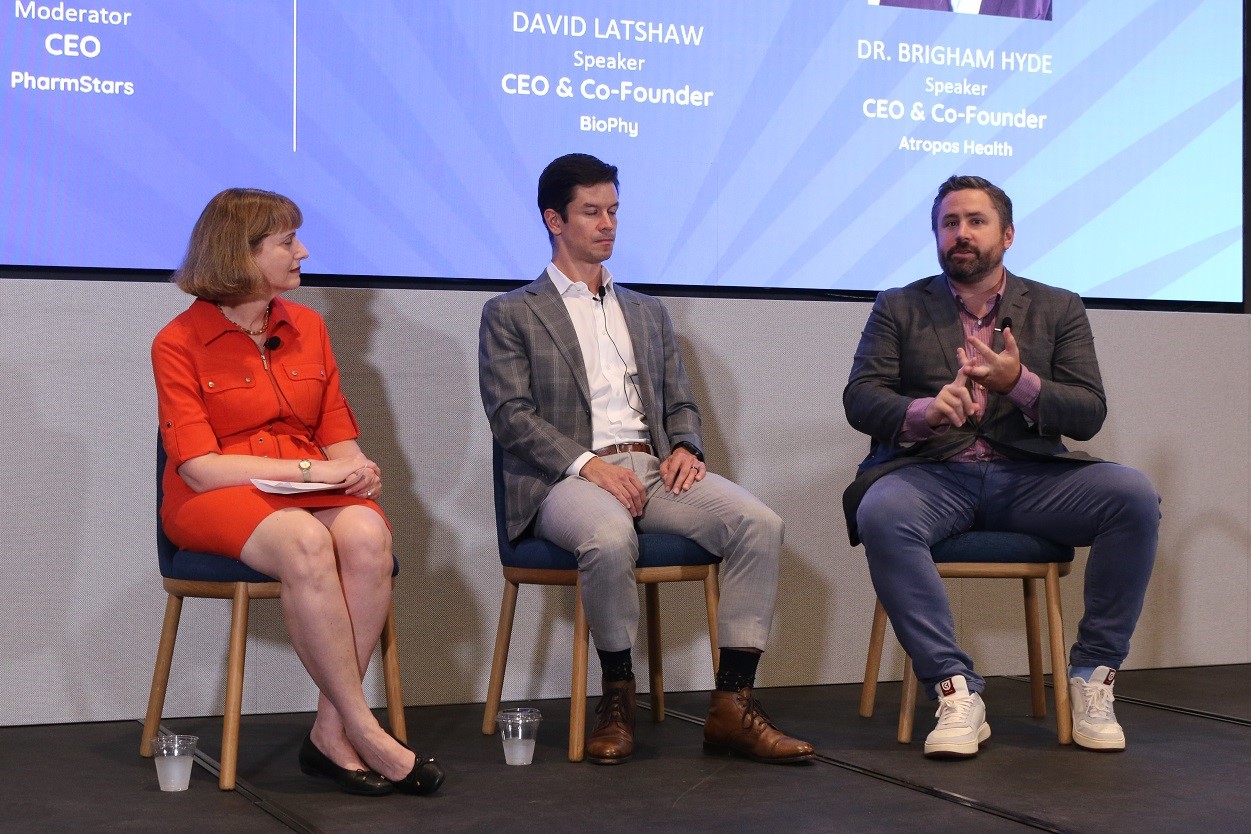
Generative artificial intelligence is finding more uses in the pharmaceutical industry, condensing unstructured information into insight and automating tasks that were one labor intensive. It’s not the solution to everything. But it’s becoming a solution to many things.
“Sometimes people just want to throw new technologies at every problem and think that’s going to work,” said David Latshaw, CEO and co-founder of BioPhy, a life sciences health tech company. “The better way to think about it is with these new capabilities, what can we do today that we could not do before. There are a lot of things in the pharmaceutical realm that are heavily language, text, document based. And that’s what you should be looking at for generative solutions.”
Latshaw spoke on a panel during MedCity News’ recent INVEST Digital Health Conference. He was joined by Brigham Hyde, CEO and co-founder of Atropos Health. The panel was moderated by Naomi Fried, CEO of PharmStars.
AI is increasingly used in drug discovery, where its applications include target identification, and quantitatively evaluating the efficacy and safety of a molecule, Latshaw said. Such applications enable companies to work with larger volumes of data than they could with traditional methods. In drug discovery, AI can help a company quickly find more drug targets and more molecules that can hit those targets. For examples of AI companies doing such work, he pointed to Recursion and Insilico Medicine, both of which recently reported mid-stage clinical trial results for lead drug candidates discovered with their respective AI technologies.
In clinical trials, applications of AI include identifying the right patients to enroll in a clinical trial and optimizing the design and structure of a trial. AI can also be used to simulate trials and make predictions. That’s important because this information can help a company determine how to allocate resources to the right program at the right time, Latshaw said. Hyde sees such simulations as important for derisking a company’s investment of resources. For example, before a Phase 2 trial starts, a simulation could see the likely outcome before a company spends $35 or $40 million on the study.
“Before you spend that, you have a really good sense of whether it’s going to succeed,” Hyde said. “Especially when you’ve got all these new molecules coming at you, you really need to do that because there’s not enough capital to try them all.”
The holdup in adoption of AI is money. The upfront cost of these technologies runs into the tens of millions of dollars, but it’s unclear when a company will see value from the investment, Latshaw said. It comes down to the risk tolerance of a company and its priorities. A company that wants to find value today would invest in using AI for later-stage development and commercialization.
At the commercial stage, AI can be used to predict the patients that will benefit most, Hyde said. These data can inform the treatment decisions of clinicians and the coverage decisions of payers. AI also has implications for the sales force. Instead of having a sales team of 1,000, a company may need only 300 sales representatives backed up by strong AI-generated evidence that can be used to target key adopters, Hyde said.
Workforce changes could happen before the commercialization stage. For example, the work of preparing an FDA submission can be done with fewer workers and less time with the assistance of AI, Hyde said. But speed is not the most important consideration. The measure of AI’s value will be trials that are faster, more efficient, and more successful.
“If you bend either the time curve or the success curve, that has a huge impact on the economic model and the capital markets model for biotech,” Hyde said.
Latshaw, a veteran of Johnson & Johnson, said his experience at a big pharmaceutical company made him witness to many failures and one or two large successful initiatives. He added that he does not think it’s a good idea for pharma companies to build their own AI capabilities. Instead, they should stick to core competencies of commercialization and science, partnering with others who bring different capabilities, he explained. A decade from now, AI will be much more sophisticated. What that will mean for pharma companies is they probably won’t change much in composition, but they’re going to be much leaner.
“They’re going to be able to do the exact same amount of work with a lot less people,” Latshaw said. “Those people are going to be very well versed in technology and domain. Those bilingual people aren’t that common now, and they will have to be for that future to work.”
Hyde sees the potential for big pharma companies to be very different from how they are now. With the new capabilities offered by AI, big pharma companies need to figure out where they are on the drug development spectrum. They could be companies that identify new targets or their place might be more along the lines of running really efficient clinical trials.
New business models will be tried, and Hyde noted that the commercialization model is already changing, with Pfizer and Eli Lilly recently announcing moves to sell certain products directly to patients. This shift is important because the companies are the one that want to drive value, so they will invest in ways to support that effort. In the future, AI’s ability to make personalized predictions could lead to new kinds of personalized medicines from the early stage of discovery all the way through to a direct-to-patient sale via a website. A company would still need to make the manufacturing and distribution side work and figure out the economics of this new model.
“That would be a whole different pharma company than we think of now,” Hyde said.
Photo by MedCity News






